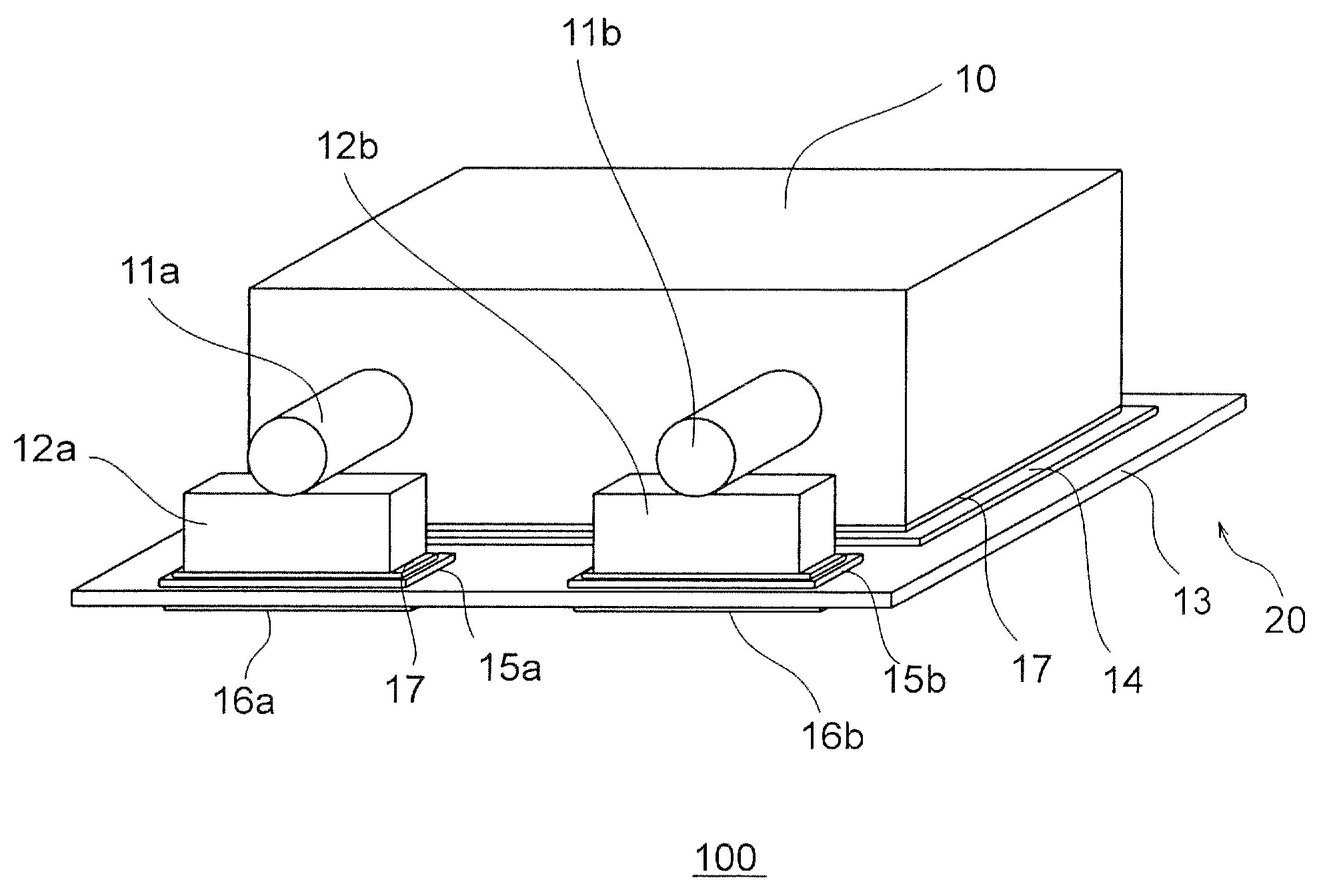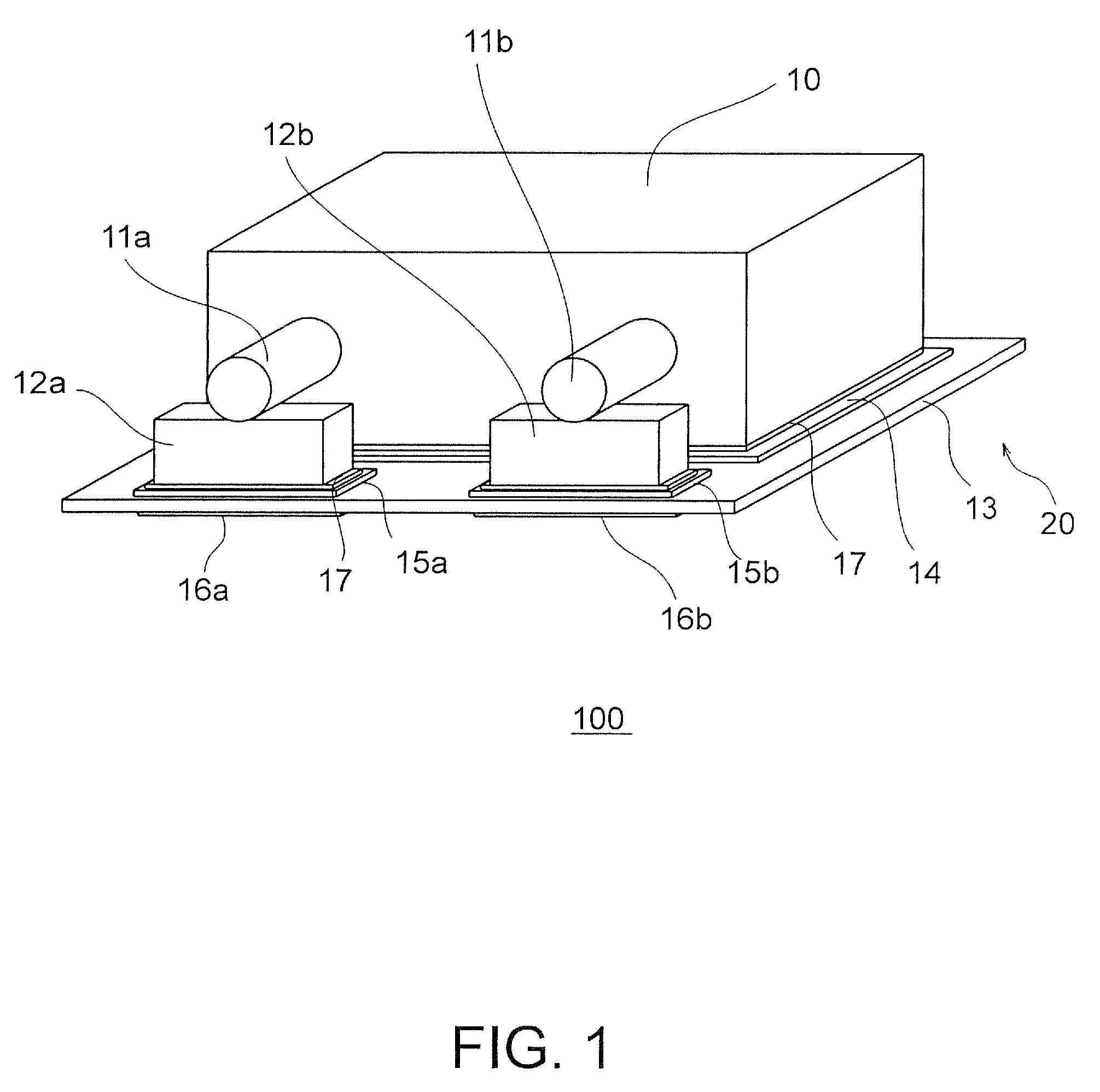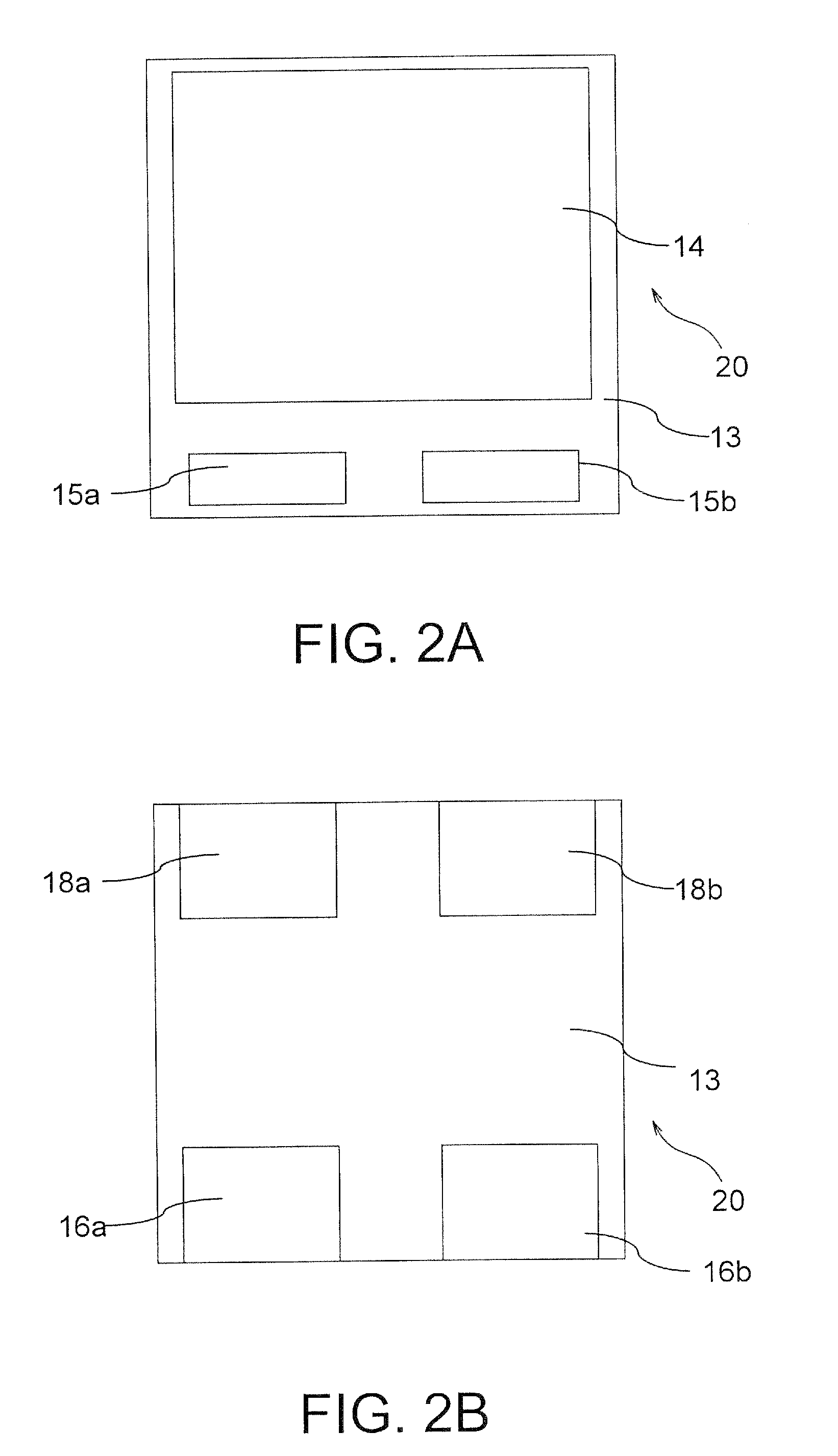Multiterminal solid electrolytic capacitor
a solid electrolytic capacitor and multi-terminal technology, applied in the direction of fixed capacitor details, capacitors, electrical equipment, etc., can solve the problems of equipment errors, high-frequency noise, and speed of operation, so as to reduce the voltage drop that occurs when the capacitor supplies the load with a current, the effect of filtering out high-frequency nois
- Summary
- Abstract
- Description
- Claims
- Application Information
AI Technical Summary
Benefits of technology
Problems solved by technology
Method used
Image
Examples
example 1
[0056]A sample with outer dimensions of 3.5 mm×2.8 mm×1.9 mm was prepared in this example.
[0057]A procedure for preparing a capacitor element 10 containing tantalum, which is a valve metal, is described below. A tantalum powder is pressed around a tantalum wire with a press and then sintered at high temperature in a high vacuum, whereby a porous sintered body is obtained. An oxide coating made of Ta2O5 is formed on the porous sintered body. After the porous sintered body is dipped in a manganese nitrate solution, a MnO2 layer is formed on the porous sintered body by thermal decomposition. Graphite and silver layers are formed over the oxide coating, respectively, whereby the capacitor element 10 is obtained. If a conductive polymer such as polythiophene or polypyrrole is used instead of MnO2, which is a part of the cathode layer, a capacitor element having low ESR can be obtained. Examples of a usable valve metal other than tantalum include niobium, aluminum, and titanium.
[0058]Two ...
example 2
[0063]A first anode lead 11a and second anode lead 11b having a shape as shown in FIG. 4 were used. A valve metal pattern extends in a capacitor element and has a repeated shape. The first and second anode leads 11a and 11b are portions that extend from the valve metal pattern in substantially parallel to each other. Unlike the anode leads of Example 1, the first and second anode leads 11a and 11b were prepared in such a manner that a tantalum sheet with a thickness of 100 μm was punched with a die. The distance between the centers of the first and second anode leads 11a and 11b is 2.0 mm. The valve metal pattern has nine bent portions disposed in the capacitor element and has a shape symmetric with respect to the center line between the first and second anode leads 11a and 11b. Other portions are substantially the same as those described in Example 1.
example 3
[0064]In this example, a capacitor 100a has a structure as shown in FIG. 5A.
[0065]A first anode lead 11a and second anode lead 11b each having a shape as shown in FIG. 5B were used. The first and second anode leads 11a and 11b are different in shape from each other. The first and second anode leads 11a and 11b were designed such that the second anode lead 11b had an ESL less than that of the first anode lead 11a. There are two bent portions in a capacitor element used. The second anode lead 11b is wide and has an inner portion extending in the capacitor element at a constant width. The second anode lead 11b is wider than the first anode lead 11a; hence, ties have different sizes and anode lead tie-connecting portions have different sizes. In particular, a wide tie 12b is used for the second anode lead 11b having a greater width and a narrow tie 12a is used for the first anode lead 11a having a less width as shown in FIG. 5A. A wide anode lead tie-connecting portion 15b is used for t...
PUM
| Property | Measurement | Unit |
|---|---|---|
| thickness | aaaaa | aaaaa |
| thickness | aaaaa | aaaaa |
| thickness | aaaaa | aaaaa |
Abstract
Description
Claims
Application Information
 Login to View More
Login to View More - R&D
- Intellectual Property
- Life Sciences
- Materials
- Tech Scout
- Unparalleled Data Quality
- Higher Quality Content
- 60% Fewer Hallucinations
Browse by: Latest US Patents, China's latest patents, Technical Efficacy Thesaurus, Application Domain, Technology Topic, Popular Technical Reports.
© 2025 PatSnap. All rights reserved.Legal|Privacy policy|Modern Slavery Act Transparency Statement|Sitemap|About US| Contact US: help@patsnap.com



